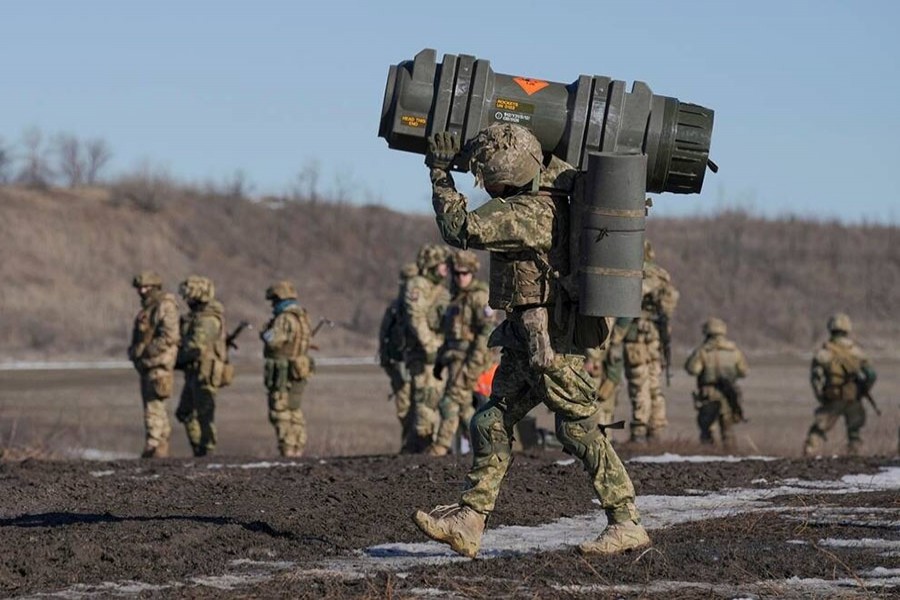In his seminal work, The Clash of Civilizations and the Remaking of World Order, Samuel Phillips Huntington could not be more correct in analysing and predicting the political developments, the 9/11 attacks, the wars in Iraq and Afghanistan and small wars in Eurasia in the post-Cold War era. His contention that population explosion in Muslim countries and the economic rise of East Asia are bringing about changes in global politics and international order. Such developments not only challenge Western dominance, but also reject supposedly 'universal' Western ideals. His probing analysis led him to pinpoint the rise of China, which, according to Huntington, would be the most potent force to start a global war of civilisations.
That Samuel Huntington has been right on many counts is indisputable. But could he have an inkling of the Russian invasion of Ukraine? Well, China stands an ally with Russia but is yet to get involved with a war with Taiwan. True, its aggressive posture in the form of violation of Taiwanese airspace and suppression of popular protests in defence of human rights and free speech have more than vindicated his view. But the Russian war imposed on its smaller and weaker neighbour was perhaps the last thing he could imagine.
According to him, the world can be divided into eight major civilisations. Russia is in the category of Orthodoxy at number 5 and defined as a 'torn' country like Turkey, Mexico and Australia ---all of which are yet to create a definite identity. Well, the Sinic civilisation led by China and closely followed by Vietnam and Korea is likely to pose the greatest challenge to the Western civilisation. With the emergence of China as a major economic and military power, the inter-civilisation conflict over nuclear proliferation, immigration, human rights and democracy will only intensify.
In the conflicts predicted, Russia does not figure but he anticipated a coalition and cooperation between Islamic and Sinic cultures to work against a common enemy, the West. Indeed, it has happened to a large extent with bilateral cooperation between some of the Middle East and African countries, including a few of the highly conflict-ridden and overtaken by radical Islamists as in Afghanistan. But there is no hint that the dominant partner of the erstwhile Soviet Union and China together would throw the greatest challenge to the West militarily. Soviet Russia may have disintegrated but Russia's military might is as enormous as that of a superpower. By this time China has also gained in strength to the level of military superpower and their combined force is a cause for serious concern for the West.
In the book, the author identifies three contentious issues such the West's attempt to maintain military superiority through non-proliferation of emerging powers with nuclear warheads, promotion of Western political values such as human rights and democracy and finally, restrictions on entries of non-Western immigrants and refugees into Western societies. Such attempts and actions are considered cultural hegemony by non-Western countries.
The bipolar world, conforming to Huntington's views, no longer existed in the post-Cold War time and gradually gave in to regionalism by virtue of common or similar ancestry, religion, language, values and institutions. Thus regional organisations such as the Association of Southeast Asian Nations (ASEAN), European Union (EU) and North American Fair Trade Agreement (NAFTA) came into being reflecting economic and political alliances.
The new economic order would have counterbalanced each other had there been no ambition for military and cultural superiority. But military alliance and its continuous expansion made the matter complex and gave rise to mistrust in the leadership of nations that suffered the worst in the World War II. A few opted for the dominant alliance and the most powerful 'torn' country with no alliance opted for a preemtive strike against Ukraine. Huntington's clash of civilisation has got a twist in the tail. China stands by Russia as a force to reckon with and there is nothing to be surprised if China's allies in the Islamic world fall in line. In this context, the civilisation fault line on communal and religious considerations was glaringly exposed between Western and non-Western nations during the Iraq invasion by the USA. Now, significantly, Chechen Muslim fighters are fighting in favour of Russia in Ukraine.
Huntington may not have envisioned Russia as an aggressor but his recipe for the West, America in particular, still proves highly relevant. He points his finger to internal and external challenges for the West. Internal challenges refer to erosion of principle values, morals and beliefs within the culture espoused so far by the West. External challenges concern emerging cultural identities in the non-Western world. Both can be a cause for decline in Western civilisation. So, he convincingly argues in favour of multicultural civilisation. While America and the West must opt for renewal of their shared identity, they have to be ready for accepting and adapting to increasing powers and influences of different civilisations.
In case of failure to adapt, Huntington prophetically predicted, the West is destined to decline or clash with other civilisations. That, according to him, will be "the greatest threat to world peace, and an international order". Russia, torn between its Orthodoxy and the legacy of Soviet-time socialism, may have started the proxy war on behalf of the non-Western camp. People in neutral countries wait with bated breath to see how the conflict in Ukraine ends.


